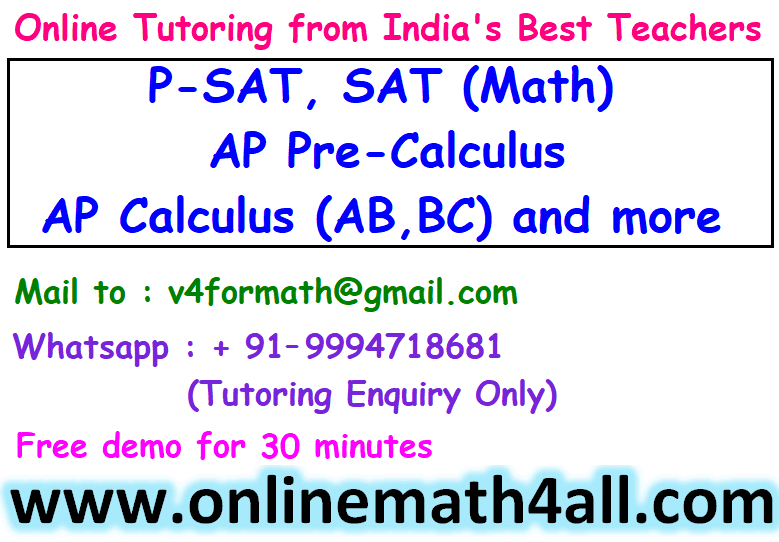WRITING EQUATIONS WORKSHEET
Subscribe to our ▶️ YouTube channel 🔴 for the latest videos, updates, and tips.
Questions 1-8 : Translate each sentence into an equation.
Question 1 :
Eighteen more than a number is 125.
Question 2 :
Twenty is 7 less than twice a number.
Question 3 :
Nine less than twice a number is three more than the same number.
Question 4 :
Twice a number increased by fourteen is identical to fifty.
Question 5 :
Half the sum of seven and a number is the same as the number decreased by two.
Question 6 :
The quotient of m and n equals four more than one-third the sum of m and n.
Question 7 :
The quotient of p and q is twelve less than three times the sum of p and q.
Question 8 :
The cube of x plus the square of y is equal to fifty two.
Questions 9-12 : Write an equation to represent the given relationship between integers.
Question 9 :
The sum of four consecutive integers is -54.
Question 10 :
The product of three consecutive odd integers is 693.
Question 11 :
8 less than the sum of two consecutive integers is equal to 55.
Question 12 :
5 more than the product of two consecutive integers is equal to 25.

Answers
1. Answer :
Eighteen more than a number is 125
Let x be the number.
Equation :
x + 18 = 125
2. Answer :
Twenty is 7 less than twice a number
Let y be the number.
Equation :
20 = y - 7
3. Answer :
Nine less than twice a number is three more than the same number
Let n be the number.
Equation :
2n - 9 = n + 3
4. Answer :
Twice a number increased by fourteen is identical to fifty
Let x be the number.
Equation :
2x + 14 = 15
5. Answer :
Half the sum of seven and a number is the same as the number decreased by two
Let y be the number.
Equation :
(1/2)(7 + y) = y - 2
6. Answer :
The quotient of m and n equals four more than one-third the sum of m and n
Equation :
m/n = (1/3)(m + n) + 4
7. Answer :
The quotient of p and q is twelve less than three times the sum of p and q
Equation :
p/q = 3(p + q) - 12
8. Answer :
The cube of x plus the square of y is equal to fifty two
Equation :
x3 + y2 = 52
9. Answer :
The sum of four consecutive integers is -54
Let x be the first integer.
Then, the remaining three integers are
x + 1, x + 2 and x + 3
Equation :
x + (x + 1) + (x + 2) + (x + 3) = -54
10. Answer :
The product of three consecutive odd integers is 693
Let y be the first integer.
Then, the remaining two integers are
y + 2 and y + 4
Equation :
y(y + 2)(y + 4) = 693
11. Answer :
8 less than the sum of two consecutive integers is equal to 55
Let x be the first integer.
Then, the second integer is x + 1.
Equation :
x + (x + 1) - 8 = 55
12. Answer :
5 more than the product of two consecutive integers is equal to 25
Let y be the first integer.
Then, the second integer is y + 1.
Equation :
y(y + 1) + 5 = 25
Subscribe to our ▶️ YouTube channel 🔴 for the latest videos, updates, and tips.
Kindly mail your feedback to v4formath@gmail.com
We always appreciate your feedback.
About Us | Contact Us | Privacy Policy
©All rights reserved. onlinemath4all.com
Recent Articles
-
Quantitative Reasoning Questions and Answers
Dec 14, 25 06:42 AM
Quantitative Reasoning Questions and Answers -
Specifying Units of Measure
Dec 14, 25 06:38 AM
Specifying Units of Measure -
Coin Tossing Probability
Dec 13, 25 10:11 AM
Coin Tossing Probability - Concept - Sample Space - Formula - Solved Problems